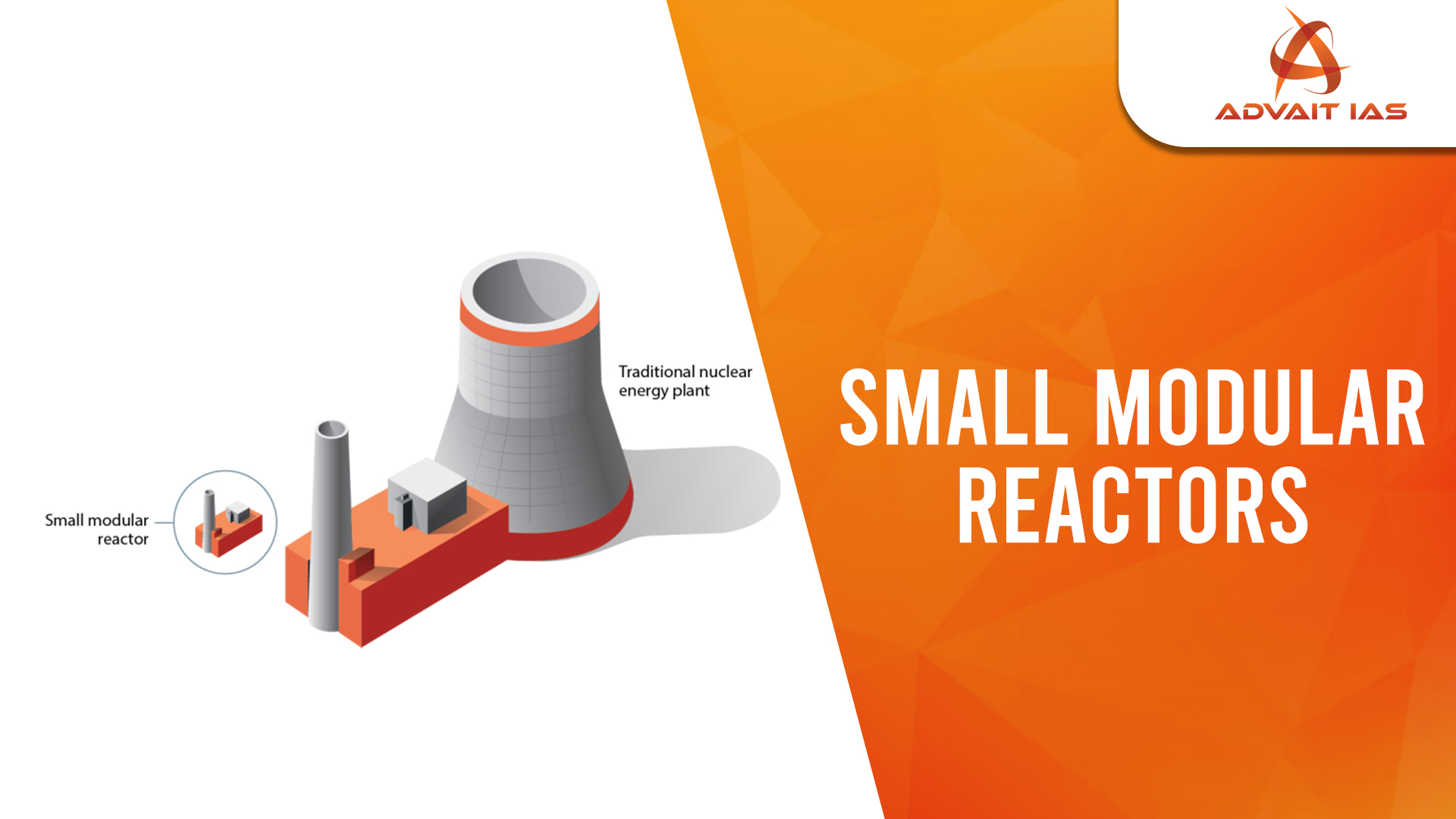Union Finance Minister announced a dedicated Nuclear Energy Mission; one of the biggest moves to expand nuclear energy sector with an allocation of a 20,000 crore in the Union Budget 2025-26.
Nuclear Energy Mission
- To achieve 100 GW of nuclear power capacity by 2047, aligning with its long-term energy transition strategy and broader “Viksit Bharat”
- India’s installed nuclear energy capacity is 8180 MW as of January 30, 2025. The government plans to increase this to 22,480 MW by 2031-32.
- Aim: For research and development of small modular reactors (SMRs), and setting up of at least five SMRs by 2033.
India’s Growing Energy Needs and SMRs
- Rapid industrial expansion, urbanization, and improved quality of life are increasing India’s energy demands.
- Commitment to reducing carbon emissions and boosting clean energy.
- Small Modular Reactors (SMRs) emerge as a promising clean, safe, and flexible energy solution.
What are SMRs?
- Compact nuclear reactors (10–300 MW capacity), smaller, more affordable, and easier to deploy than large reactors.
- Factory-built, transportable modules reduce construction time, cost, and improve quality control.
- Advanced safety features: passive cooling systems, underground construction for disaster protection.
Global SMR Developments
- USA: NuScale Power’s SMR approved; operational by early 2030s. TerraPower, X-energy developing advanced designs.
- UK: Rolls-Royce leading 470 MW SMR project; significant government funding, targeting 2030s deployment.
- China: First high-temperature gas-cooled SMR commissioned.
- Russia: First floating nuclear power plant, Akademik Lomonosov, supplying Arctic regions.
- Canada: Investing in SMRs to power remote northern regions.
SMRs in India: Current Status & Potential
- Early development phase under Department of Atomic Energy (DAE) and Nuclear Power Corporation of India Limited (NPCIL).
- Potential for remote regions, islands, and industrial applications.
- Could complement Pressurised Heavy Water Reactors (PHWRs), replace ageing coal plants, and support green hydrogen production.
- Potential use in naval bases and coastal areas, inspired by Russia’s floating reactors.
Applications of SMRs in India
- Remote Areas: North-East, border regions, Andaman & Nicobar Islands—reliable power without costly diesel.
- Industries: Steel, cement, chemicals—clean energy for high-temperature heat.
- Green Hydrogen: Power electrolysis for sustainable hydrogen production.
- Naval & Maritime Use: Floating power plants for strategic areas.
Global Lessons & Opportunities for India
- Collaborate with international SMR developers for technology transfer.
- Localize manufacturing to reduce costs and boost domestic capabilities.
- Learn from global regulatory frameworks and best practices.
Challenges for SMR Deployment in India
- Regulatory Hurdles: Need for streamlined approval processes for faster adoption.
- High Initial Costs: Financial incentives, subsidies, or public-private partnerships required.
- Public Perception: Transparent communication and strong safety measures to build trust.
SMRs offer a pathway toward a clean, resilient, and sustainable energy strategy. With strategic investments and policy support, India can emerge as a global leader in SMR technology.






